Nuthatches are small birds that are members of the Sittidae family. They are found in wooded areas throughout the world, from the Arctic to the tropics.
They are well known for their ability to climb up and down tree trunks headfirst. Nuthatches have strong legs and sharp claws which allow them to grip onto the bark of trees and move around easily.
They have pointed bills which they use to dig into bark and search for food. Nuthatches feed on insects, nuts, and seeds. They are highly adaptable and can be found in a variety of habitats.
1. White-Breasted Nuthatch

The White-breasted Nuthatch is a medium-sized bird belonging to the nuthatch family Sittidae. It measures around 15.5 cm in length and its color varies throughout its range.
Males have a light blue-grey upperpart, with a black crown and nape whereas females have a dark grey crown instead of a black one.
The underparts are whitish, with a reddish tinge on the sides and flanks while the bill is short and stout with a pale base near eyes which can be yellow or white depending upon geographic location..
This species feeds mainly on insects but will also eat seeds, nuts, and berries when available.
They prefer open woodlands where they often climb trees searching for food along trunks as well as branches underneath bark crevices creating their nest there too.
Scientific classification:
| Kingdom | Animalia |
| Phylum | Chordata |
| Class | Aves |
| Order | Passeriformes |
| Family | Sittidae |
| Genus | Sitta |
| Species | S. carolinensis |
2. Eurasian Nuthatch
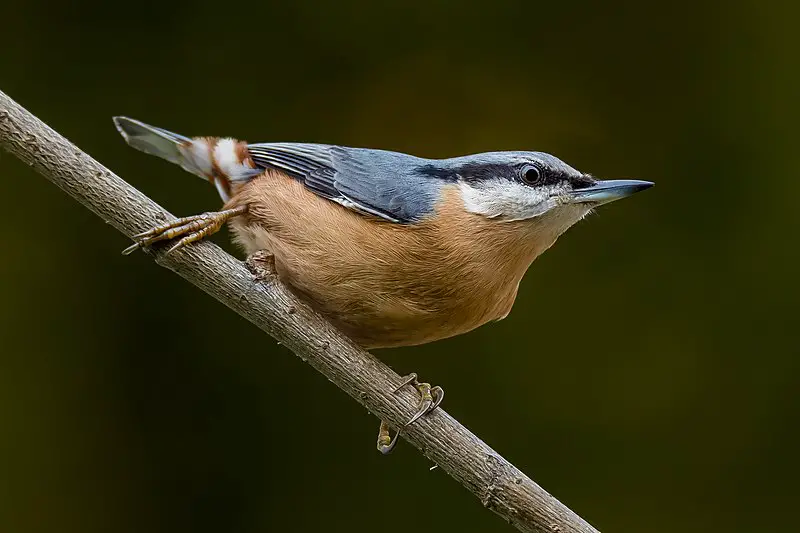
The Eurasian nuthatch is a small passerine bird found in the Palearctic region, most commonly in Europe. It has blue-gray upperparts, an orange-buff underbelly, and a black eye stripe.
The distinctive characteristic of this species is its loud dwip call which can be heard throughout its range.
This species has more than 20 subspecies divided into three main groups based on their geographical ranges.
Those from western regions have the buffest coloration while eastern birds are greyer overall.
They usually feed on insects and spiders but also eat nuts and seeds when available, often storing them for later use by wedging them into bark crevices or similar places to retrieve later as needed.
Scientific classification:
| Kingdom | Animalia |
| Phylum | Chordata |
| Class | Aves |
| Order | Passeriformes |
| Family | Sittidae |
| Genus | Sitta |
| Species | S. europaea |
3. Red-Breasted Nuthatch

The Red-breasted Nuthatch is a beautiful and vocal songbird that can be found in coniferous forests across Canada, Alaska, the northeastern United States, and the western US.
This small bird has blue-grey upper parts with cinnamon underparts, a white throat and face with black eye stripes, a straight grey bill, and a black crown.
Its call sounds like a tin trumpet; it’s high-pitched yet nasal.
During mating season they form monogamous pairs to build their nest near tree trunks or branches at low heights off the ground where they lay 2 – 8 eggs at once.
They are very active little birds who love clinging to trees while searching for insect larvae or seeds within the bark of trees which helps control pest populations.
Scientific classification:
| Kingdom | Animalia |
| Phylum | Chordata |
| Class | Aves |
| Order | Passeriformes |
| Family | Sittidae |
| Genus | Sitta |
| Species | S. canadensis |
4. Brown-Headed Nuthatch
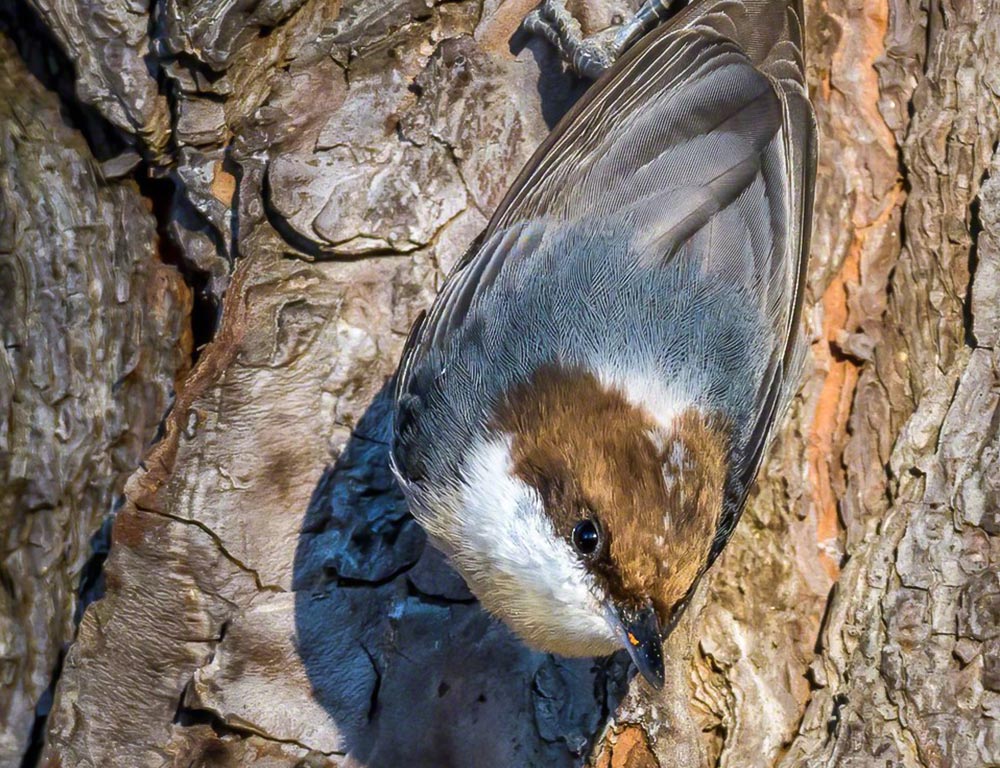
The brown-headed nuthatch is a small songbird native to pine forests in the southeastern US. With its brown head and blue-gray body, it’s easily recognizable.
Recent genetic analyses have revealed low differentiation between northern and southern populations in Florida, yet unfortunately lower genetic diversity among south Florida populations due to habitat fragmentation.
The Bahamas represent an isolated population of this species that may be at risk from human activity or other forms of disturbance such as hurricanes.
Conservation efforts will help ensure the protection of these birds for generations to come.
Scientific classification:
| Kingdom | Animalia |
| Phylum | Chordata |
| Class | Aves |
| Order | Passeriformes |
| Family | Sittidae |
| Genus | Sitta |
| Species | S. pusilla |
5. Pygmy Nuthatch
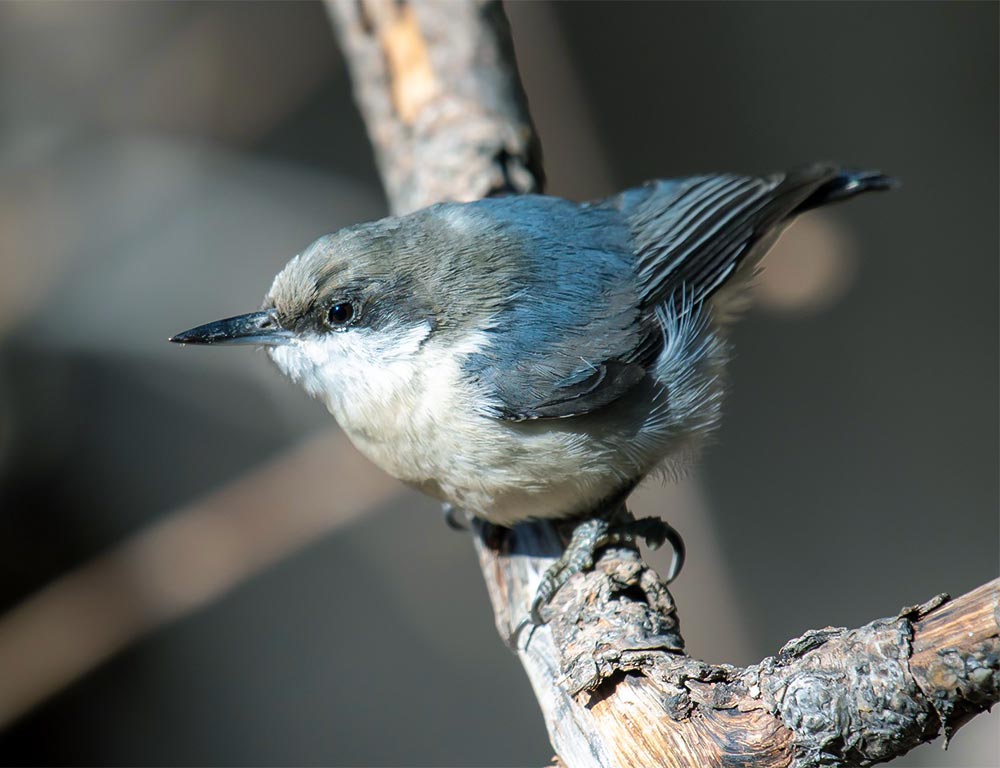
The Pygmy Nuthatch is a small songbird, measuring only 10 cm (4 in) long and weighing around 10 grams.
It can be found across the western U.S., from southern British Columbia to central Mexico, although its presence has become quite fragmented due to habitat loss.
This species primarily inhabits coniferous forests of pines, Douglas firs, and other evergreen trees – usually ponderosa pines.
The Pygmy Nuthatch is particularly adept at foraging among pine cones; it uses its strong bill to remove seeds while perched upside down on them.
Its plumage includes shades of greyish blue with white underparts and a brown cap that is often raised when excited or alarmed during flight displays.
Scientific classification:
| Kingdom | Animalia |
| Phylum | Chordata |
| Class | Aves |
| Order | Passeriformes |
| Family | Sittidae |
| Genus | Sitta |
| Species | S. pygmaea |
6. Brown Creeper
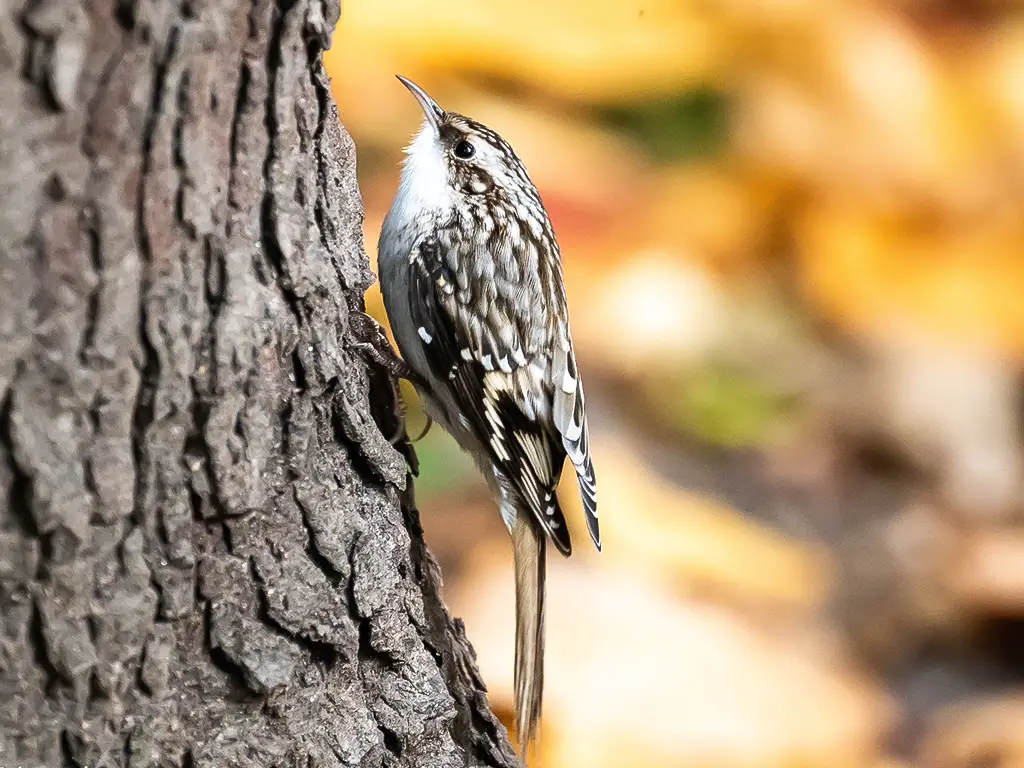
The Brown Creeper is a small songbird belonging to the Certhiidae family and is native to North America. It has brown upperparts with light spotting that resembles tree bark, as well as white underparts.
Its bill is long and thin with a slight downward curve while its tail is also long yet stiff; this helps it creep up trees.
This bird feeds mainly on insects which can be found in crevices of barks or dead plants, thanks to its curved bill which allows it access to these hard-to-reach places.
When searching for food they move diagonally upwards around trunks so their camouflage blends in perfectly with the background making them difficult to spot.
Scientific classification:
| Kingdom | Animalia |
| Phylum | Chordata |
| Class | Aves |
| Order | Passeriformes |
| Family | Certhiidae |
| Genus | Certhia |
| Species | C. americana |
7. Blue Nuthatch
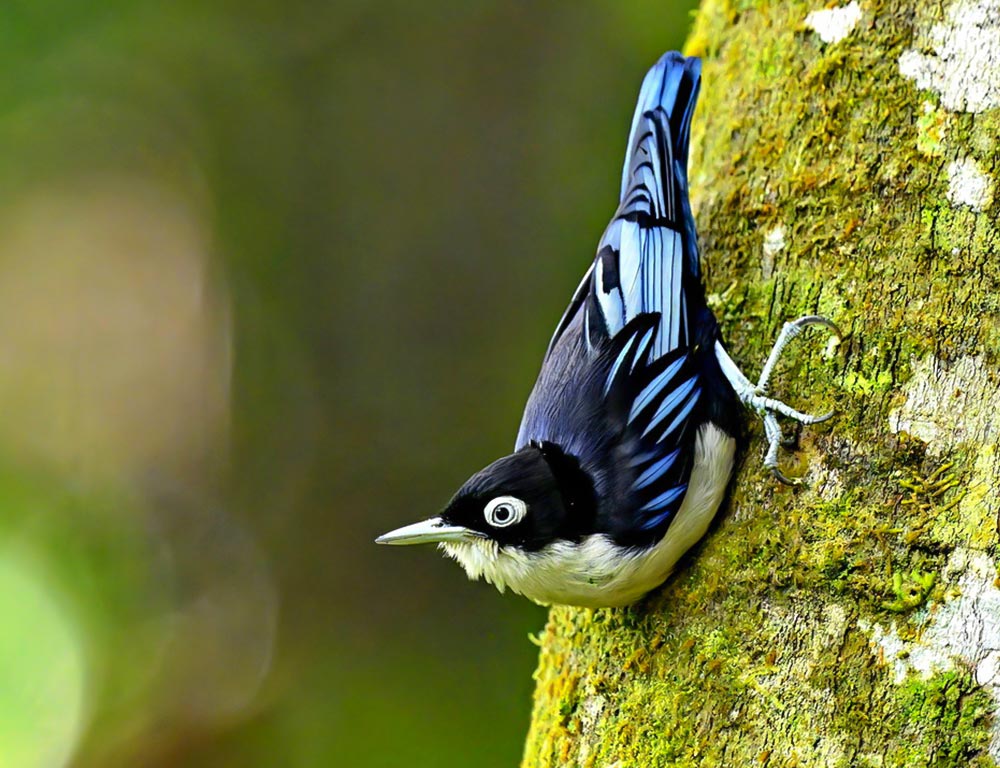
The Blue Nuthatch is a magnificent bird belonging to the Nuthatch family Sittidae. It stands out among its peers due to its vivid coloration, with an impressive black or dark blue head and upperparts close to purple with azure feathers.
The wings are edged in black while the throat is white and there’s a bold white stripe running from behind each eye down onto the neck sides.
This medium-sized species measures 13.5 cm (5.3 inches) long and has slight sexual dimorphism, making it easy for experienced observers to distinguish between males and females of this species in their natural habitats such as subtropical or tropical moist lowland forests throughout India, Nepal, Bangladesh, and Myanmar.
Scientific classification:
| Kingdom | Animalia |
| Phylum | Chordata |
| Class | Aves |
| Order | Passeriformes |
| Family | Sittidae |
| Genus | Sitta |
| Species | S. azurea |
8. Algerian Nuthatch
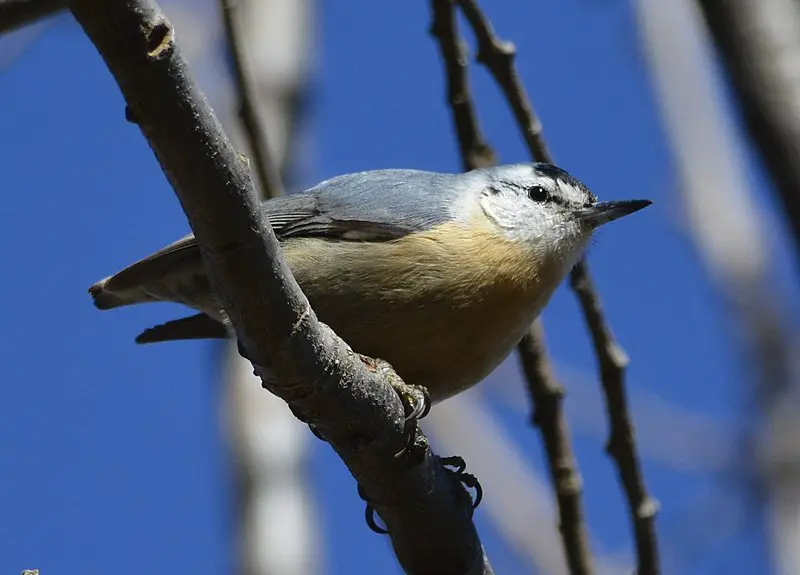
The Algerian nuthatch, also known as the Kabyle nuthatch, is a species of bird in the Sittidae family.
It has an average length between 11.5 – 12.5 cm and its upperparts are bluish gray with males having black fronts on their crowns for distinction from females.
These birds are sedentary and feed primarily on arthropods such as insects or spiders found among tree bark or foliage.
They can be found throughout Algeria where they inhabit deciduous forests and woodlands near riverside areas which provide them safe nesting sites to raise their young ones each year during breeding season that usually takes place in springtime months from March until May.
Scientific classification:
| Kingdom | Animalia |
| Phylum | Chordata |
| Class | Aves |
| Order | Passeriformes |
| Family | Sittidae |
| Genus | Sitta |
| Species | S. ledanti |
Also Featured In: Common Algerian Birds ,
9. White-Tailed Nuthatch
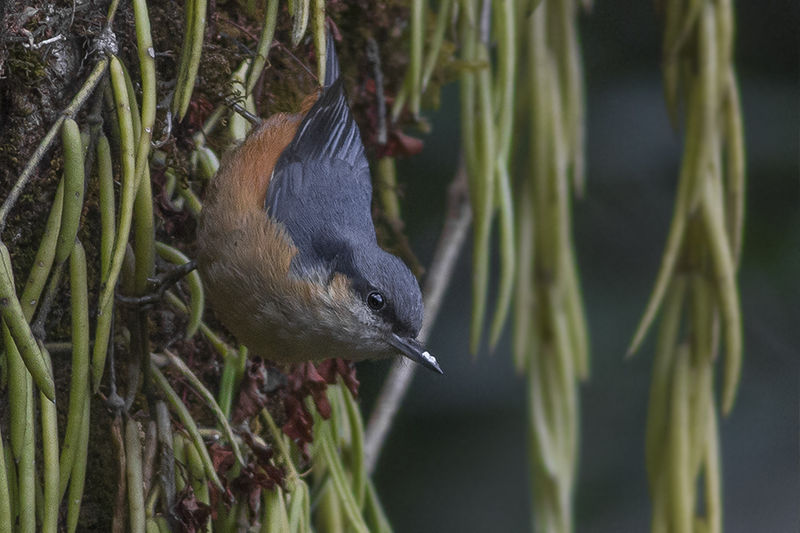
The White-tailed Nuthatch is a bird species of the Sittidae family, found in Bhutan, India, Laos, Myanmar, Nepal and Thailand. It inhabits low to middle Himalayas as well as associated mountain ranges.
Its distinguishing features include its buff underside and smaller beak compared to other birds of similar size.
It forages by clinging onto branches or tree trunks while searching for food such as nuts or insects among bark crevices with its short powerful bill.
The nuthatch is also known for having an impressive ability to climb down trees head first.
This species is generally solitary but can sometimes seen in pairs during the winter season when they are more likely to congregate at communal roosts at nightfall.
Despite being widespread across their range, their population has been decreasing due to the destruction of habitat caused by deforestation – making them vulnerable according conservation status assessment conducted by the IUCN red list.
Scientific classification:
| Kingdom | Animalia |
| Phylum | Chordata |
| Class | Aves |
| Order | Passeriformes |
| Family | Sittidae |
| Genus | Sitta |
| Species | S. himalayensis |
10. Giant Nuthatch

The Giant Nuthatch is a species of bird belonging to the Sittidae family and is known for being one of the largest nuthatches.
It measures 19.5 cm in length, with its upperparts having a bluish-gray coloration and a light gray front from crown to upper back that stands out against the darker rest of its back.
Two thick black eyebrow lines complete the look, along with whitish cheeks and throat as well as light gray underparts.
Its tail has white tips which are quite visible when it flies or flicks them rapidly during alarm calls or territorial disputes between males vying for breeding rights over females located within their territories.
They make nests by excavating holes in dead trees using their strong beaks, laying up to 10 eggs per clutch in the spring season before they hatch after a two-week incubation period by both parents taking turns sitting on top of them until ready.
Scientific classification:
| Kingdom | Animalia |
| Phylum | Chordata |
| Class | Aves |
| Order | Passeriformes |
| Family | Sittidae |
| Genus | Sitta |
| Species | S. magna |
11. Western Rock Nuthatch
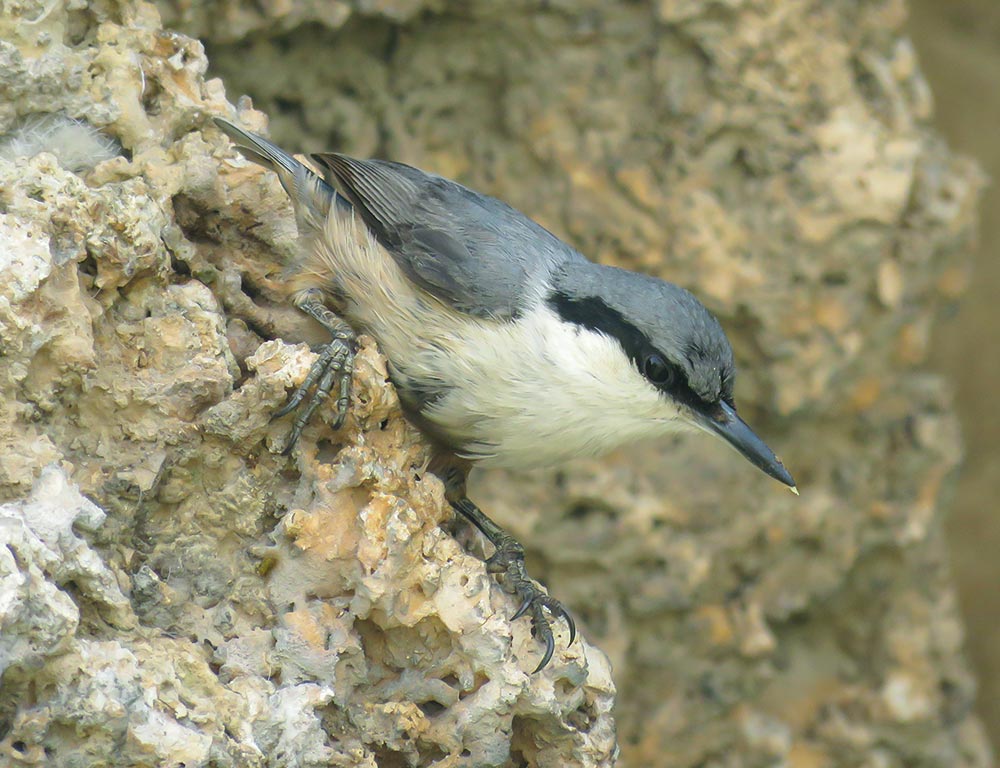
The Western Rock Nuthatch is a small passerine bird that can be found in parts of Europe and the Middle East. It has an olive-grey back, blackish wings, white underparts with a grey breast band, and a yellow vent area.
Its legs are grey and its bill is short and broad. This species prefers rocky habitats such as mountainside cliffs or crags used for nesting sites where they build cup-shaped nests using mud mixed with grasses or feathers.
They mainly eat insects but also consume seeds during winter months when food is scarce.
The western rock nuthatch remains largely resident apart from some post-breeding dispersal making it relatively easy to spot year-round if you know what you’re looking for.
Scientific classification:
| Kingdom | Animalia |
| Phylum | Chordata |
| Class | Aves |
| Order | Passeriformes |
| Family | Sittidae |
| Genus | Sitta |
| Species | S. neumayer |
12. Yellow-Billed Nuthatch
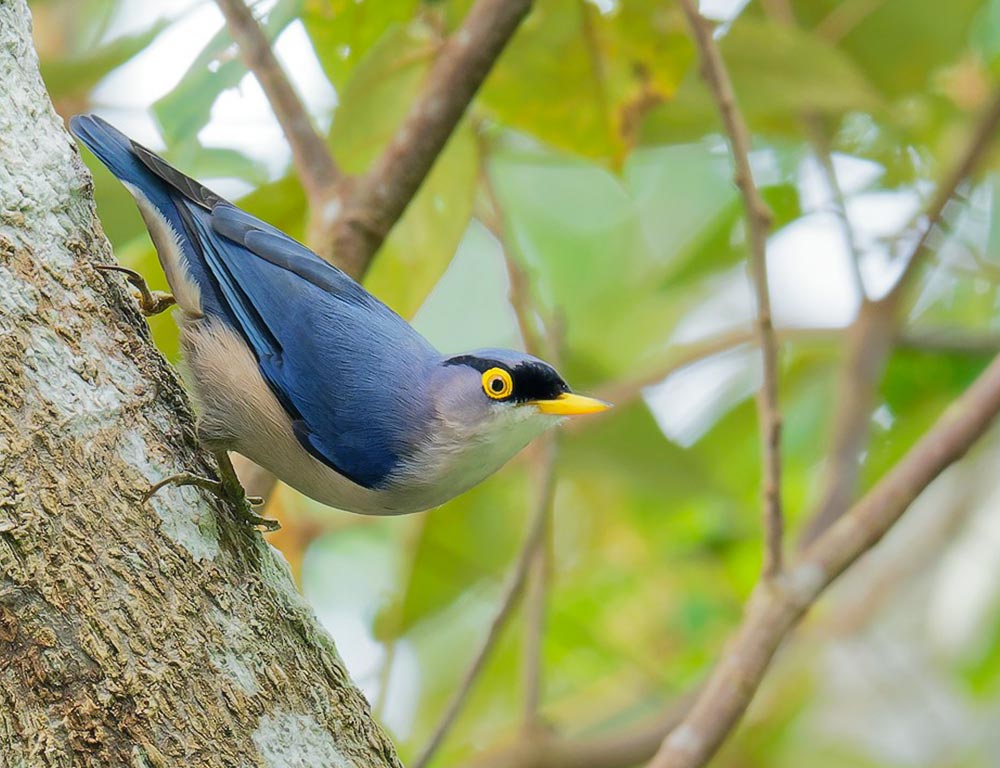
The Yellow-billed nuthatch is a species of bird that belongs to the family Sittidae. It can be found in Hainan, Laos, and Vietnam in their natural habitats such as subtropical or tropical moist lowland forests and subtropical or tropical moist montane forests.
Unfortunately, this beautiful bird is facing threats from habitat loss due to human activities like deforestation which has been a major cause for its decline.
Therefore it’s important to conserve these areas so we can protect them before they become extinct.
To help save this species, local communities should take part by replanting trees and creating awareness about the importance of conservation efforts among people living near affected sites.
Scientific classification:
| Kingdom | Animalia |
| Phylum | Chordata |
| Class | Aves |
| Order | Passeriformes |
| Family | Sittidae |
| Genus | Sitta |
| Species | S. solangiae |
13. Krüper’s Nuthatch
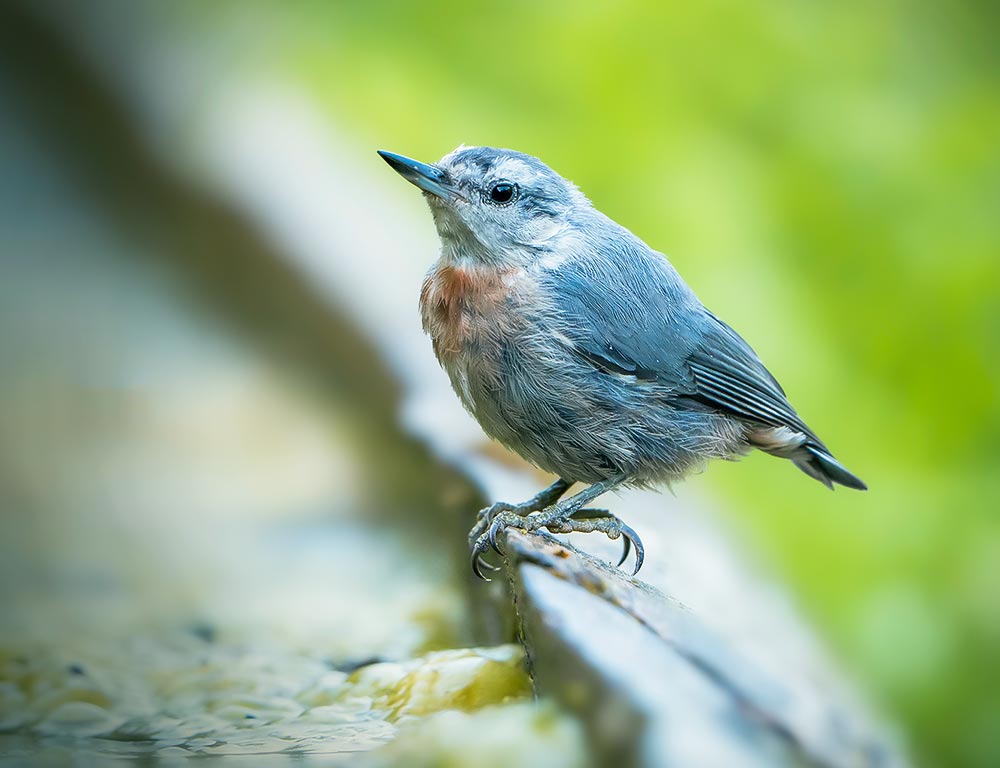
Krüper’s nuthatch is a species of bird in the Sittidae family. It has blue-gray upperparts with black or gray eyestripe and white supercilium, while its underparts are yellowish-white to pale buff.
The front half of the crown is black for adult males but less prominent for females. This small to medium-sized bird measures 12.5 centimeters (4.9 inches) in length and can be found from southeastern Bulgaria through Turkey into northeastern Iraq and Armenia, as well as Iran’s Turkmen Sahra region near Ashgabat city.
They inhabit deciduous forests dominated by oak trees where they feed on tree bark insects while climbing up and down trunks like other nuthatches do.
Scientific classification:
| Kingdom | Animalia |
| Phylum | Chordata |
| Class | Aves |
| Order | Passeriformes |
| Family | Sittidae |
| Genus | Sitta |
| Species | S. krueperi |
14. Chestnut-Bellied Nuthatch
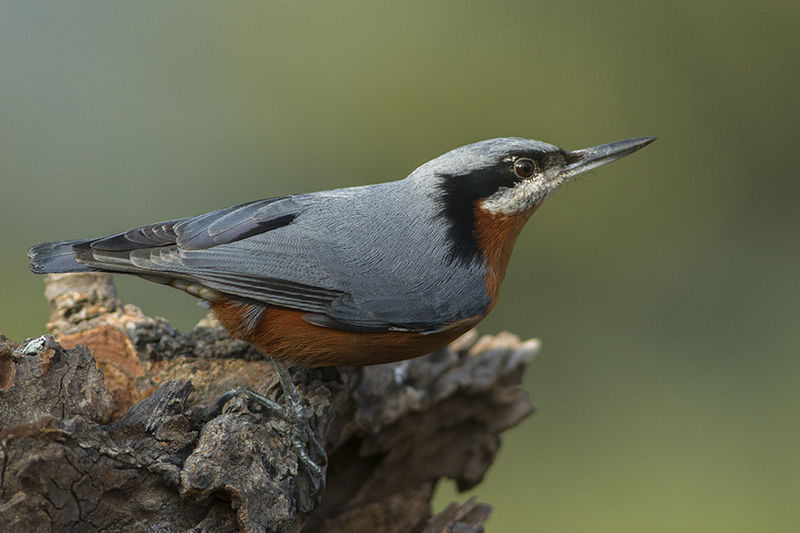
The Chestnut-bellied Nuthatch is a small bird belonging to the Sittidae family and found in countries from India to Nepal.
It lives mainly in subtropical or tropical forests that are either dry or moist, as well as montane and lowland areas.
The Burmese nuthatch has similar features but can be distinguished by its heftier bill, which is blackish with an orange base near the nostrils; it also has a more prominent white eyebrow stripe than its relative.
This species forages mainly on ground surfaces for insects and their larvae, occasionally eating fruits too.
They have been observed forming mixed flocks with other birds such as Barbets, and leaf warblers among others during winter months when food availability decreases significantly due to cold conditions prevailing at higher altitudes of mountains they inhabit throughout this season.
Scientific classification:
| Kingdom | Animalia |
| Phylum | Chordata |
| Class | Aves |
| Order | Passeriformes |
| Family | Sittidae |
| Genus | Sitta |
| Species | S. cinnamoventris |
15. White-Browed Nuthatch
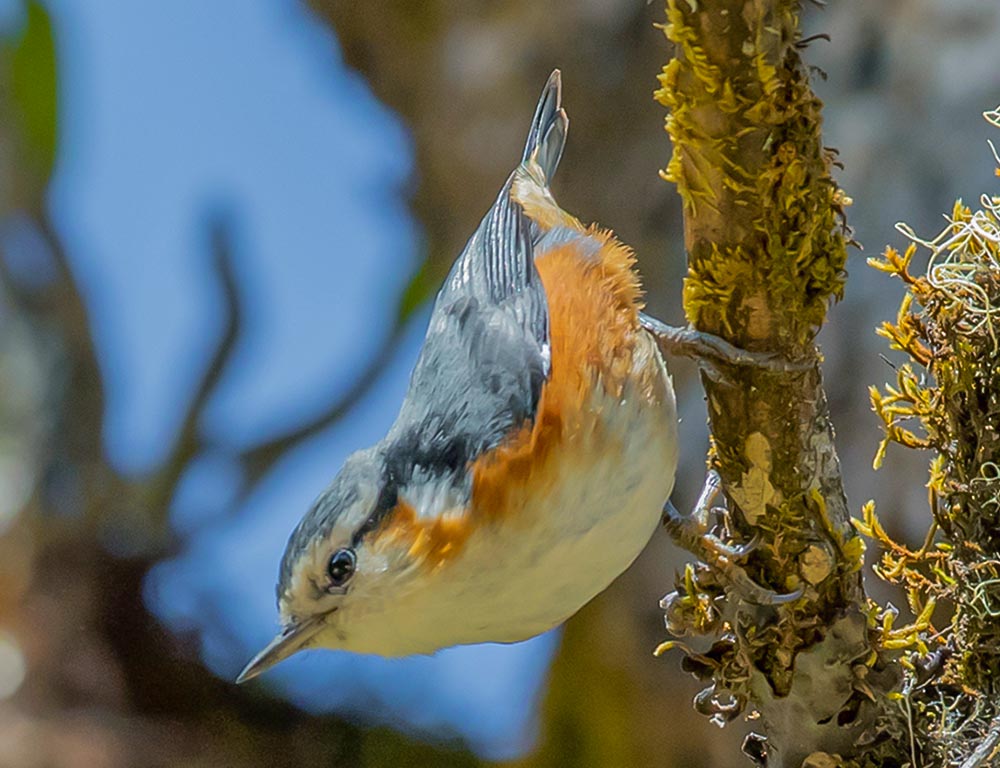
The White-browed Nuthatch is a species of bird in the Sittidae family. It has upperparts that are gray-blue and white underparts on its throat, cheeks, and breast as well as orange coloring on its flanks, belly, and lower abdomen.
This small nuthatch measures 11.5 cm (4.5 inches) with no sexual dimorphism between sexes.
They can be found in Southeast Asia from India to China inhabiting deciduous forests at low elevations up to about 2000 meters above sea level foraging for food mainly insects by climbing tree trunks using their sharp claws.
These birds have an unmistakable call that sounds like “chik chiki” making them easy to spot if you keep your ears open while walking through their natural habitat.
Scientific classification:
| Kingdom | Animalia |
| Phylum | Chordata |
| Class | Aves |
| Order | Passeriformes |
| Family | Sittidae |
| Genus | Sitta |
| Species | S. victoriae |
16. Velvet-Fronted Nuthatch
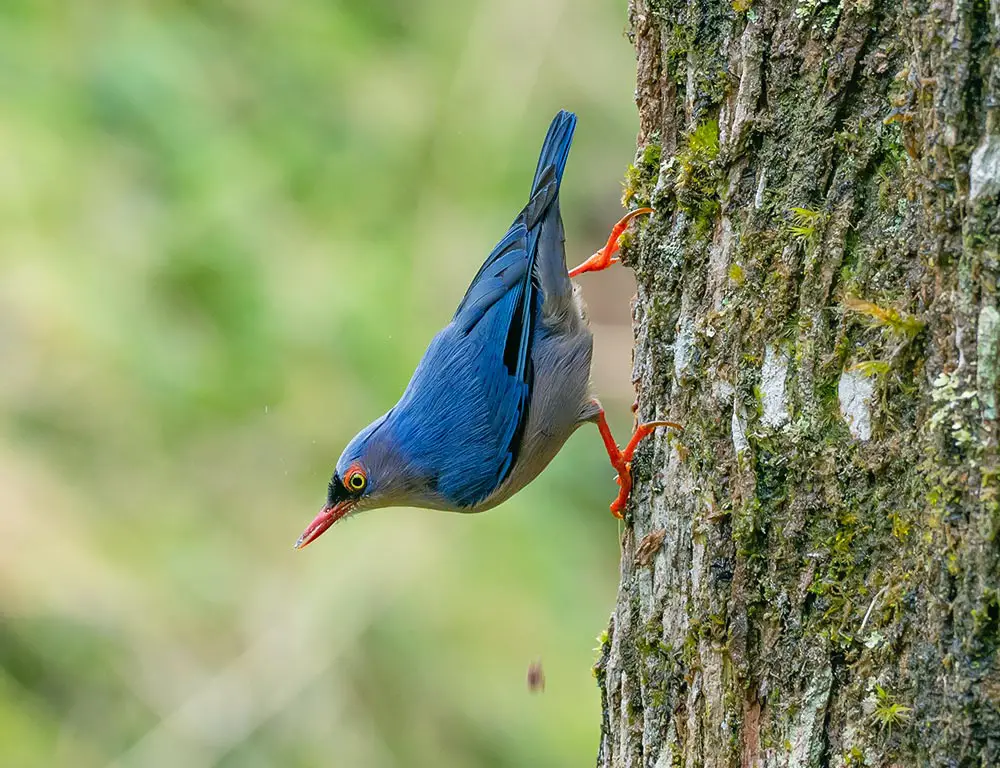
The Velvet-fronted Nuthatch is a small passerine bird native to southern Asia. It has strong, clawed toes which help it easily climb up and down tree trunks and move on the underside of branches.
Its diet consists mainly of insects found in bark crevices that they can access with their long beaks.
These birds are usually seen alone or in pairs but sometimes join mixed flocks with other species such as woodpeckers and barbets during migration season.
They have black heads, grey wings, white bellies, and blueish backs. Their bright chestnut crowns make them stand out from other nuthatches living around the same area.
The Velvet-Fronted Nuthatch is an interesting bird to observe for its unique behavior when foraging; often hanging upside down like a bat.
Scientific classification:
| Kingdom | Animalia |
| Phylum | Chordata |
| Class | Aves |
| Order | Passeriformes |
| Family | Sittidae |
| Genus | Sitta |
| Species | S. frontalis |
Also Featured In: Urban Birds of Hong Kong,
17. White-Cheeked Nuthatch
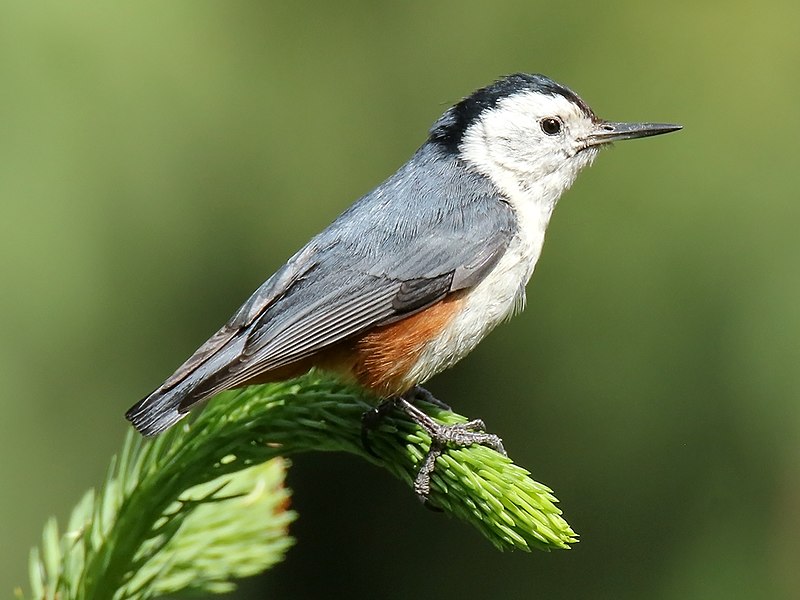
The white-cheeked nuthatch is a species of bird found in Afghanistan, Bhutan, India, Nepal, and Pakistan.
It has distinctive features such as its 13 cm length and white cheeks and underparts which contrast with its dark grey upper parts.
This small but attractive bird inhabits boreal forests as well as temperate forests for nesting sites and to feed on nuts or insects depending upon the season.
Although their population appears to be stable at present due to current conservation efforts more research needs to be done into this species to ensure that they remain safe from any potential threats going forward.
Scientific classification:
| Kingdom | Animalia |
| Phylum | Chordata |
| Class | Aves |
| Order | Passeriformes |
| Family | Sittidae |
| Genus | Sitta |
| Species | S. leucopsis |
18. Carolina Chickadee
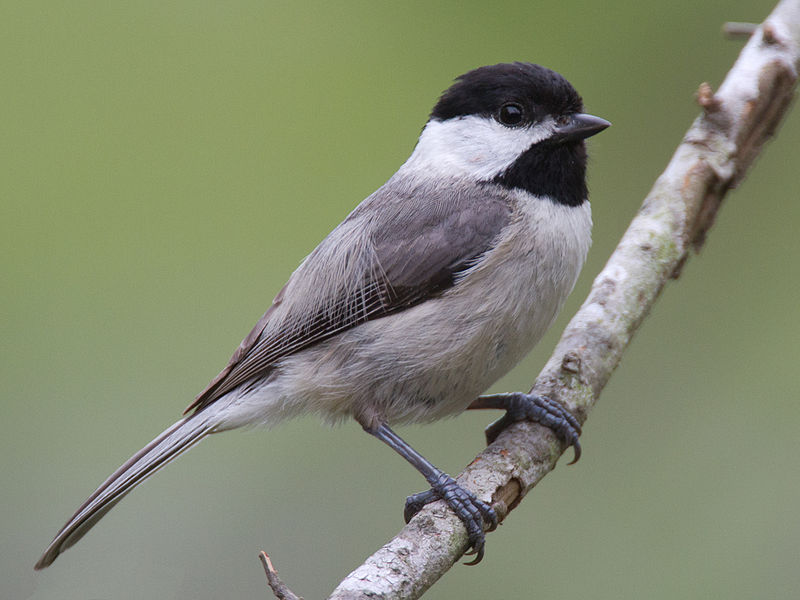
The Carolina Chickadee is a small passerine bird found in the tit family Paridae. It stands out for its distinct black and white, grey-brown feathers with an off-white underside.
This species can be spotted by its call: “chick-a-dee”. The American Ornithologists’ Union has classified them into their own genus called Poecile as they differ from other tits due to both genetic data and morphology.
These birds are found all over North America, living in wooded areas near open fields or water sources.
They feed on insects such as caterpillars but also have been known to eat suet at backyard feeders during winter months when food is scarce.
Scientific classification:
| Kingdom | Animalia |
| Phylum | Chordata |
| Class | Aves |
| Order | Passeriformes |
| Family | Paridae |
| Genus | Poecile |
| Species | P. carolinensis |
19. Beautiful Nuthatch
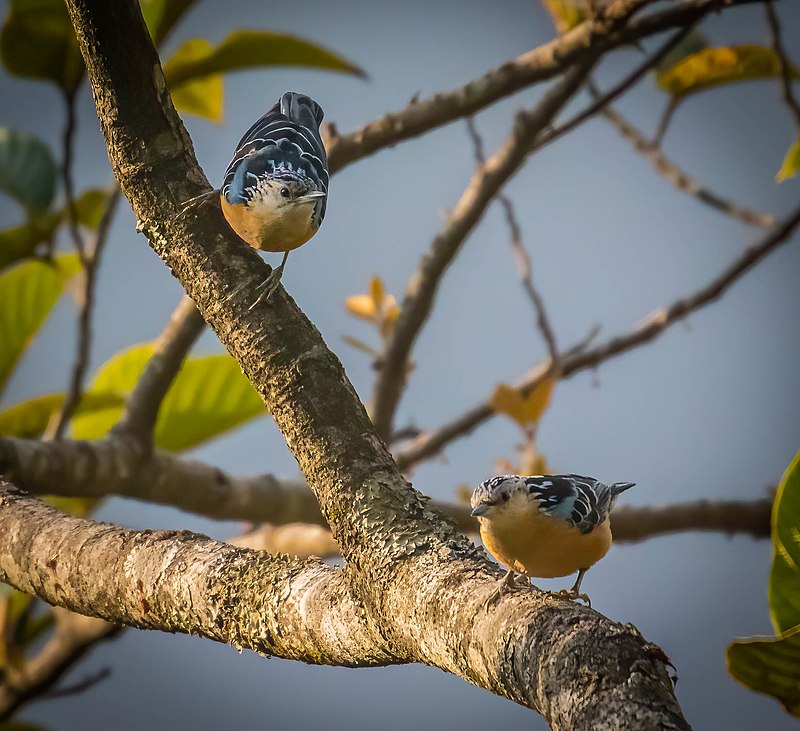
The Beautiful Nuthatch is a stunning bird from the Sittidae family. It is 16.5 cm long and has no sexual dimorphism, meaning males and females look alike.
Its vibrant plumage consists of black, azure blue, and white wings with light blue streaks on its head.
The underparts are yellowish-brown with dark stripes down each side to complete this striking appearance.
This species can be found in East Asian countries such as India, China, and Japan where it enjoys foraging for insects on tree trunks or hopping along branches like other nuthatches do.
They often make their homes in cavities inside trees which protect them from predators while also giving them plenty of food sources nearby.
These birds have adapted well to urban landscapes too; they will even enter houses if there’s an open window.
All in all, the beautiful nuthatch provides us with a fascinating sight that we should continue to preserve by protecting its natural habitats around the world.
Scientific classification:
| Kingdom | Animalia |
| Phylum | Chordata |
| Class | Aves |
| Order | Passeriformes |
| Family | Sittidae |
| Genus | Sitta |
| Species | S. formosa |
20. Corsican Nuthatch
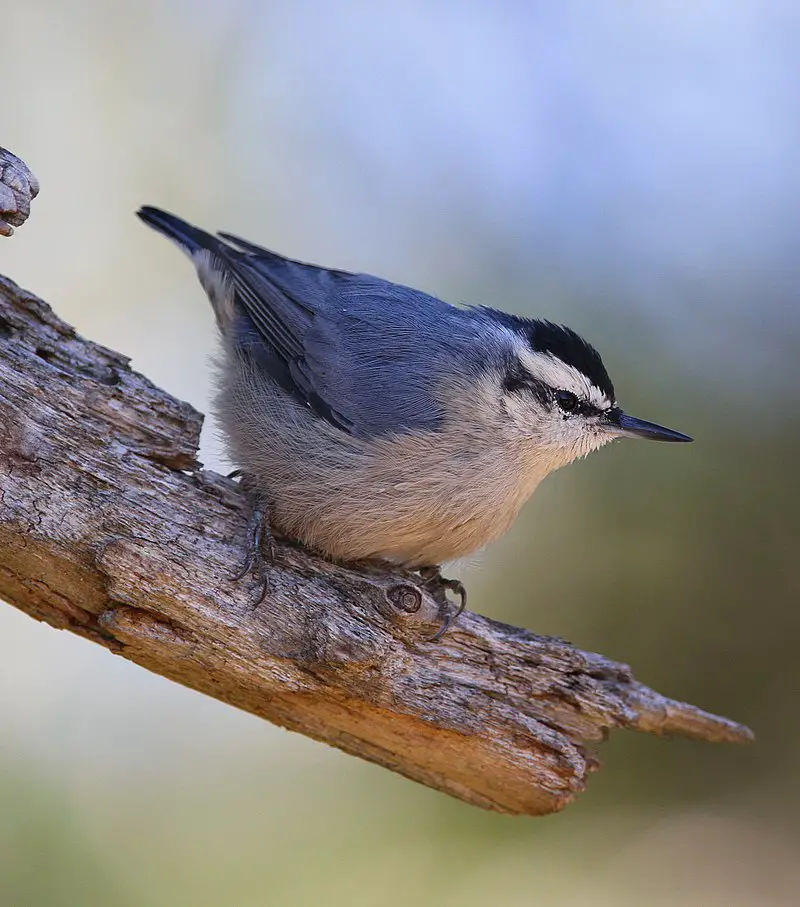
The Corsican Nuthatch is a species of bird belonging to the Nuthatch family Sittidae. It has an overall length of 12 cm and bluish-gray upperparts with greyish-white underparts.
Males can be distinguished by their entirely black crowns, while females have lighter shades on top.
This sedentary bird is territorial but not very shy as it often feeds high in trees located in its native area: Corsica Island.
Its diet consists mostly of insects, which they search for among cracks or crevices found on tree trunks and branches.
The conservation status of this species is currently Least Concern due to its relatively large range size despite being threatened by deforestation activities taking place on the island.
Scientific classification:
| Kingdom | Animalia |
| Phylum | Chordata |
| Class | Aves |
| Order | Passeriformes |
| Family | Sittidae |
| Genus | Sitta |
| Species | S. whiteheadi |
Also Featured In: European Birds, Most Common Birds of Corsica
21. Chinese Nuthatch
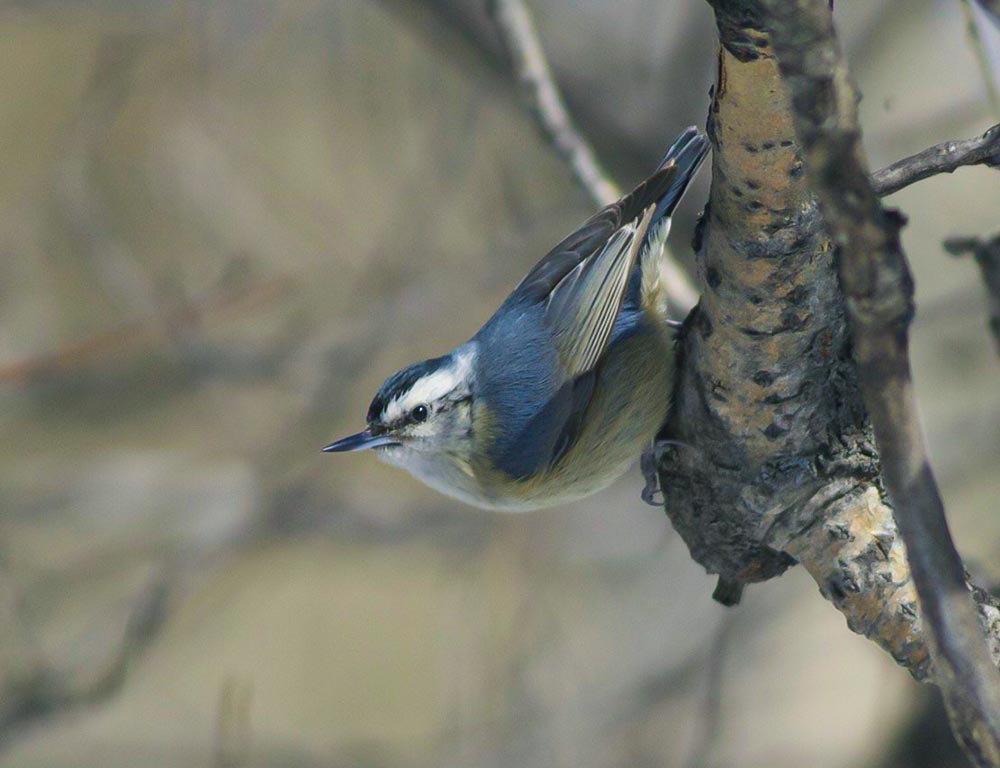
The Chinese nuthatch is a small bird that belongs to the Sittidae family. It measures 11.5 cm (4.5 in) in length and has distinctive blue-gray upperparts and buff-greyish or cinnamon-orange underparts, with white cheeks.
There is also sexual dimorphism between males and females; adult males have very black crowns while those of females are blue-gray like their other feathers.
This species can be found throughout southeast China where they inhabit forests made up of coniferous trees such as pine and spruce where they feed on insects, nuts, fruits, seeds, acorns, etc., which it finds by climbing from branch to branch searching for food items in tree bark crevices.
Scientific classification:
| Kingdom | Animalia |
| Phylum | Chordata |
| Class | Aves |
| Order | Passeriformes |
| Family | Sittidae |
| Genus | Sitta |
| Species | S. villosa |
22. Black-And-White Warbler
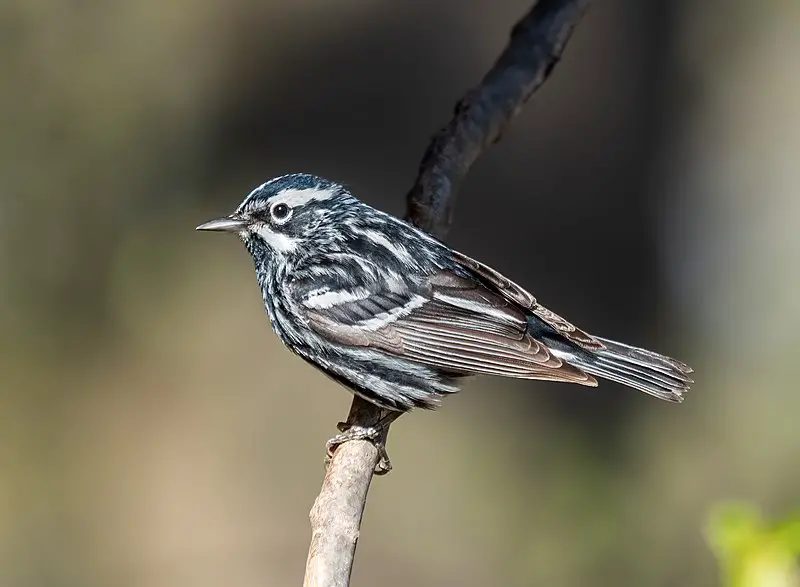
The Black-and-white Warbler is a unique species of bird native to North America. It has striking black and white plumage and breeds in the northern part of the continent, wintering in Central America, Florida, West Indies, and Peru.
This warbler is rarely seen as far west as Europe but it’s still being studied for its behavior and ecology.
Its diet consists mainly of insects which it catches by clinging on trees like a woodpecker before quickly darting away again when prey appears.
The population size remains stable although they are vulnerable to habitat loss due to deforestation or other human activities so their conservation status should be monitored closely over time.
Scientific classification:
| Kingdom | Animalia |
| Phylum | Chordata |
| Class | Aves |
| Order | Passeriformes |
| Family | Parulidae |
| Genus | Mniotilta Vieillot, 1816 |
| Species | M. varia |
Also Featured In: Long Island Birds You Should Know, Birds that Live around Central Florida
23. Chestnut-Vented Nuthatch
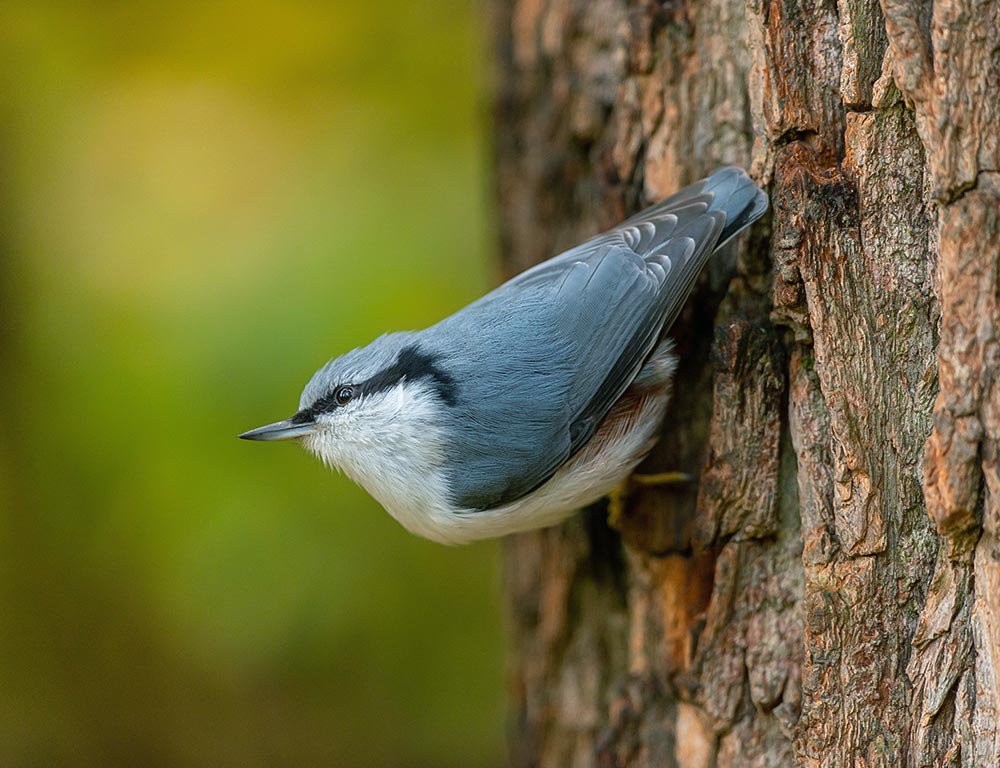
The Chestnut-vented Nuthatch is a medium-sized bird species, growing up to 12.5–14 cm (4.9–5.5 in) long which belongs to the nuthatch family Sittidae.
It has gray-blue upperparts and buff or gray underparts with brick red on its flanks, accompanied by a black loral stripe, white undertail with rufous border, and chestnut vent feathers beneath the tail coverts.
These birds are usually found near bamboo thickets as well as open woodlands where they feed on insects and fruits from tree trunks.
They also often flock together in small groups of 3 – 10 individuals while foraging through tree branches looking for food.
Scientific classification:
| Kingdom | Animalia |
| Phylum | Chordata |
| Class | Aves |
| Order | Passeriformes |
| Family | Sittidae |
| Genus | Sitta |
| Species | S. nagaensis |
24. Oak Titmouse
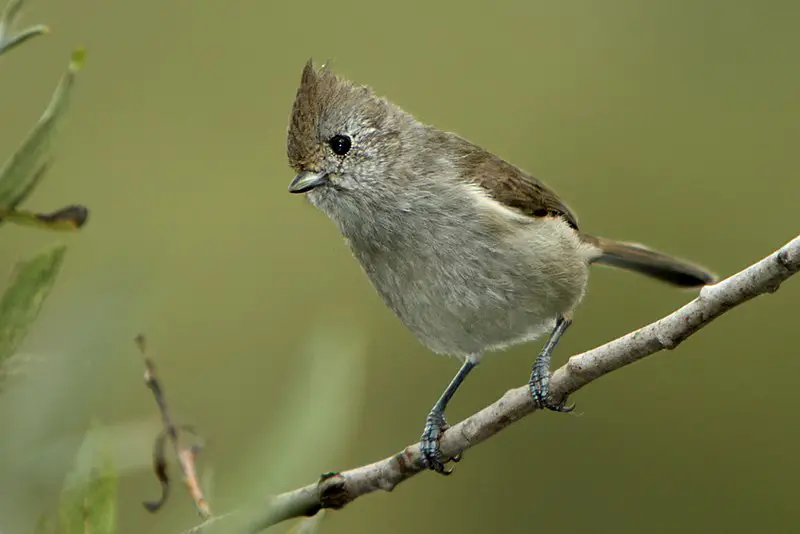
The Oak Titmouse is a small passerine bird of the tit family, Paridae. It has an overall grayish-brown plumage with a cream-colored underside and its face is plain in coloration lacking any distinct patterning or markings.
The distinguishing feature of this species, however, is the tufted crest on top of its head that gives it a unique appearance.
They are native to western North America where they inhabit oak woodlands and chaparral habitats at elevations between sea level up to 5500 feet above sea level.
These birds feed mostly on insects such as caterpillars but also consume seeds and fruits during colder months when insect prey becomes scarce.
In addition, they have been seen stealing food from other birds’ nests including acorn Woodpecker’s caches.
Scientific classification:
| Kingdom | Animalia |
| Phylum | Chordata |
| Class | Aves |
| Order | Passeriformes |
| Family | Paridae |
| Genus | Baeolophus |
| Species | B. inornatus |
25. Sulphur-Billed Nuthatch
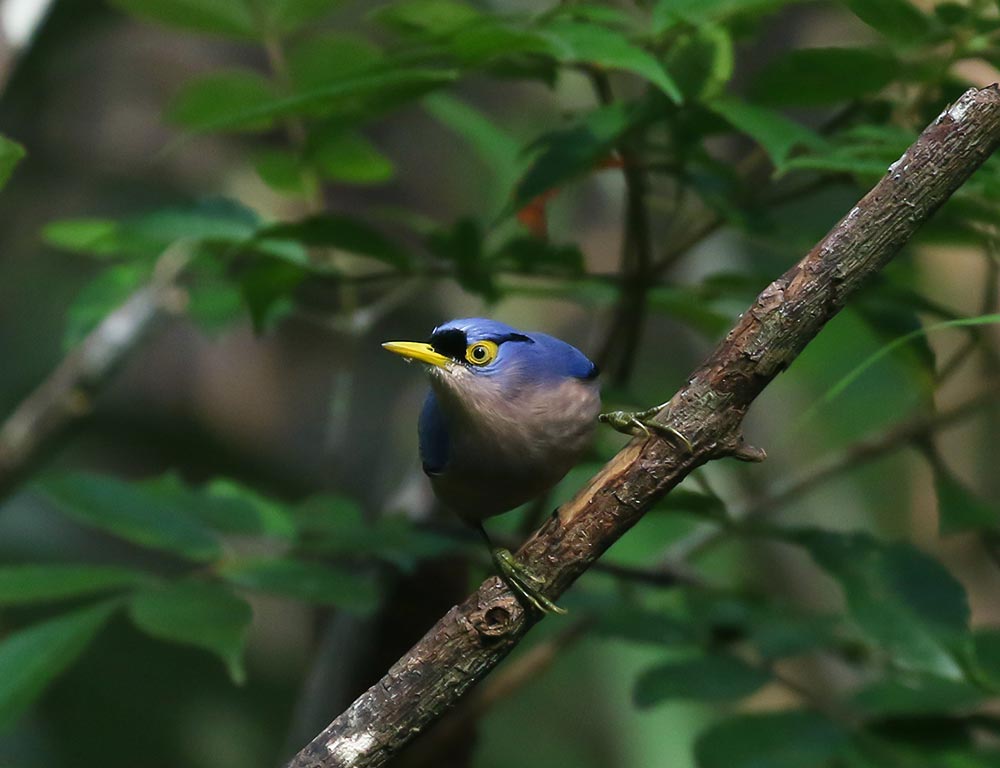
The Sulphur-billed Nuthatch is a species of bird that can be found only in the Philippines. It is part of the Sittidae family and its natural habitats include subtropical or tropical moist lowland forests as well as moist montane forests.
This small, colorful bird typically moves around in flocks with other birds like Blue-headed fantails, sunbirds, flowerpeckers, and more.
The body of this unique creature has white wings and tail feathers while its head displays rich brown tones along with yellow underparts which are surrounded by bright blue stripes at their edges.
Its characteristic long bill is where it gets its name from – since it features an orange sulfur color on top.
All these remarkable features make them quite easy to identify when spotted among other forest birds during your next trip to the Philippines.
Scientific classification:
| Kingdom | Animalia |
| Phylum | Chordata |
| Class | Aves |
| Order | Passeriformes |
| Family | Sittidae |
| Genus | Sitta |
| Species | S. oenochlamys |
26. Yunnan Nuthatch
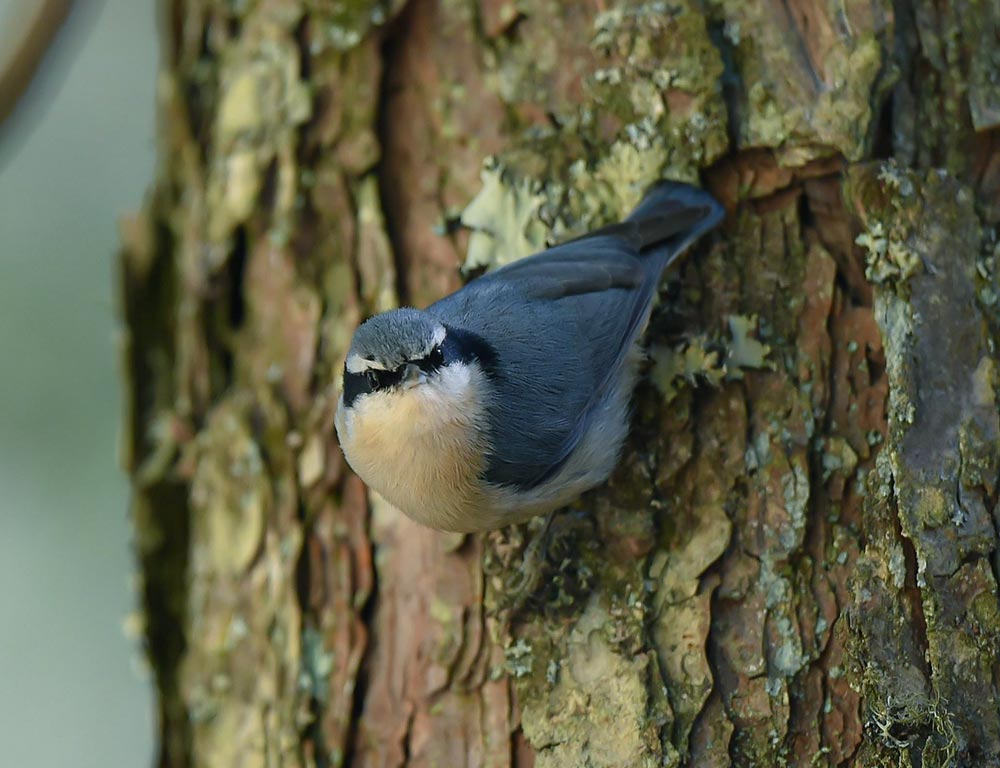
The Yunnan nuthatch is a small bird belonging to the Sittidae family. It measures around 12 centimeters and weighs between 7.5 and 13 grams, with grey-blue upperparts contrasting against its light buffy lowerparts.
This species was first described by William Robert Ogilvie-Grant in 1900 based on a male holotype specimen.
One of their defining features is the black streaks running down from each eye along both sides of their head as well as white tips found at the end of some feathers located on its wings and tail.
These birds inhabit various types of woodland habitats such as coniferous forests, deciduous broadleaf woods, or mixed woodlands across southern China and northern Burma where they feed mainly on insects but will also eat seeds when necessary.
Scientific classification:
| Kingdom | Animalia |
| Phylum | Chordata |
| Class | Aves |
| Order | Passeriformes |
| Family | Sittidae |
| Genus | Sitta |
| Species | S. yunnanensis |
27. Kashmir Nuthatch
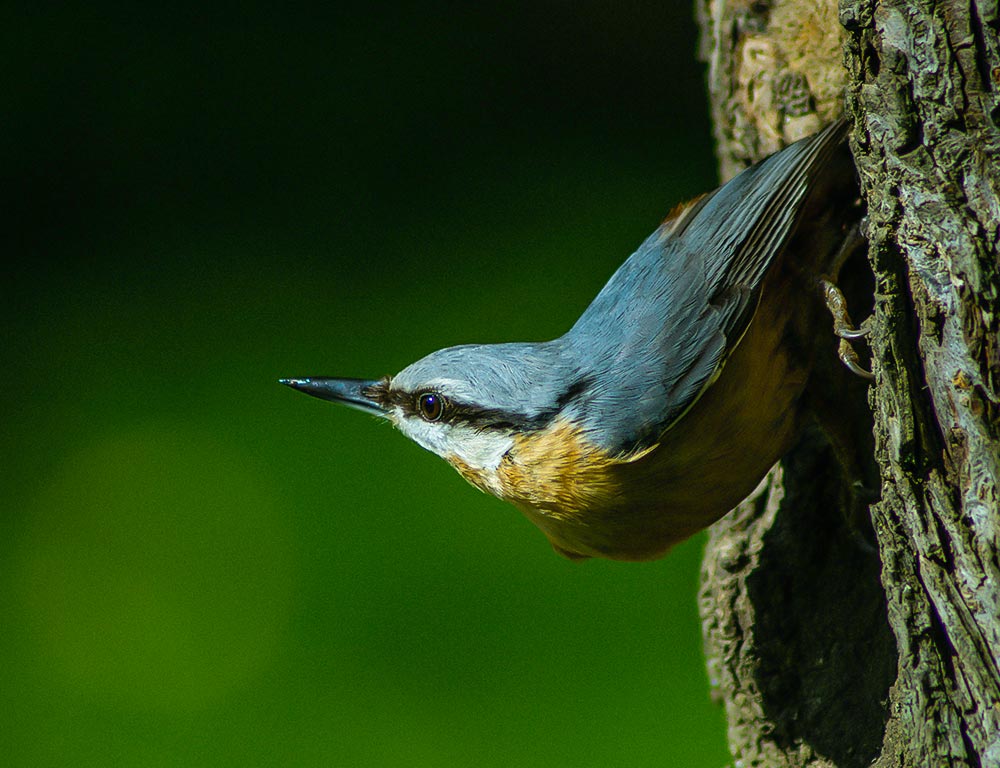
The Kashmir nuthatch is a species of bird found in the northernmost regions of the Indian subcontinent, primarily at mid-altitudes of the Himalayas.
It ranges across Afghanistan, India, Nepal, and Pakistan and has an estimated population size that makes it classified as common.
Its diet mainly consists of insects such as ants and beetles which are collected from tree bark or soil surfaces with its sharp bill. The male birds can be identified by their black head cap while females have brownish-grey instead.
They usually live in pairs year round but during breeding season they gather into larger groups for nesting purposes high up on mountain cliffs or trees near water sources like rivers or streams.
Their nests consist mostly of twigs lined with grasses and feathers creating a comfortable shelter for them to breed successfully each year.
Scientific classification:
| Kingdom | Animalia |
| Phylum | Chordata |
| Class | Aves |
| Order | Passeriformes |
| Family | Sittidae |
| Genus | Sitta |
| Species | S. cashmirensis |
28. Siberian Nuthatch
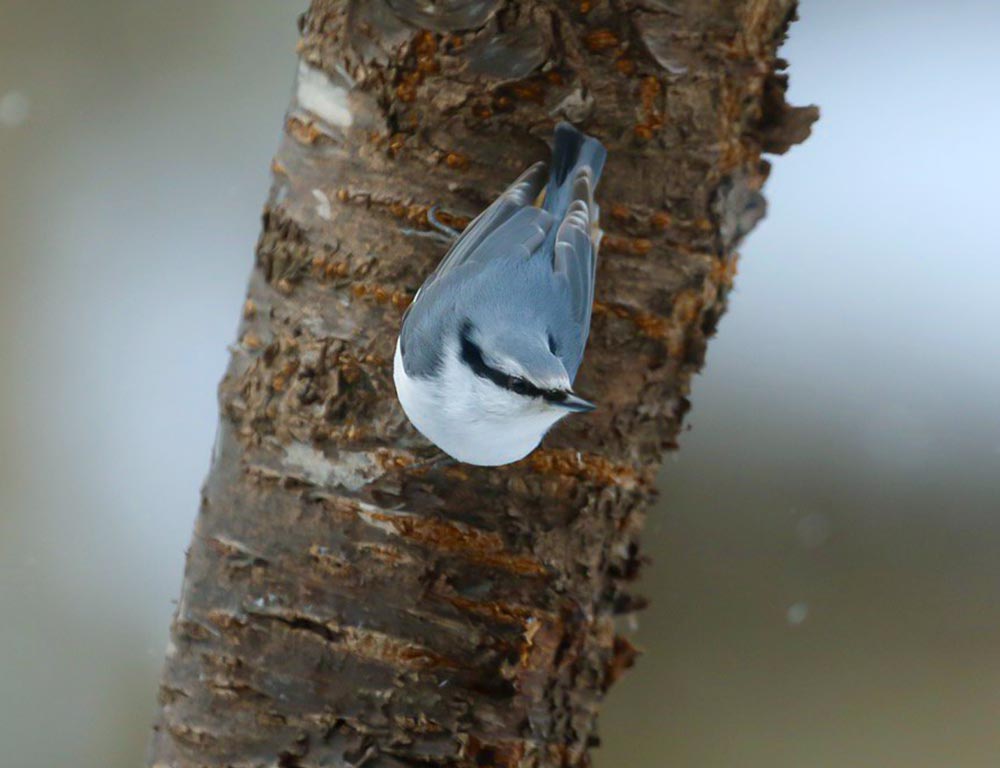
The Siberian Nuthatch is a species of bird belonging to the Sittidae family. It was formerly categorized as a subspecies of the Eurasian nuthatch, but in 2006 it was identified as its species based on morphological and molecular differences.
On average, this bird is larger than its more common relative, with distinct traits such as an oval-shaped bill that is slightly bigger and darker feathers along the wings and tail.
This adaptable little creature can be found living in coniferous forests across Siberia from western Russia into northeastern China and Mongolia during the spring/summer months before migrating south for the winter season.
Its diet consists mainly of seeds & nuts which are stored away for later use during colder weather – making them quite resourceful.
As well as being great climbers thanks to their sharp claws – they have also been known to form ‘flocks’ or groups when searching for food together.
All in all, these fascinating birds make wonderful additions to any nature lover’s list of backyard visitors.
Scientific classification:
| Kingdom | Animalia |
| Phylum | Chordata |
| Class | Aves |
| Order | Passeriformes |
| Family | Sittidae |
| Genus | Sitta |
| Species | S. arctica |
29. Eastern Rock Nuthatch
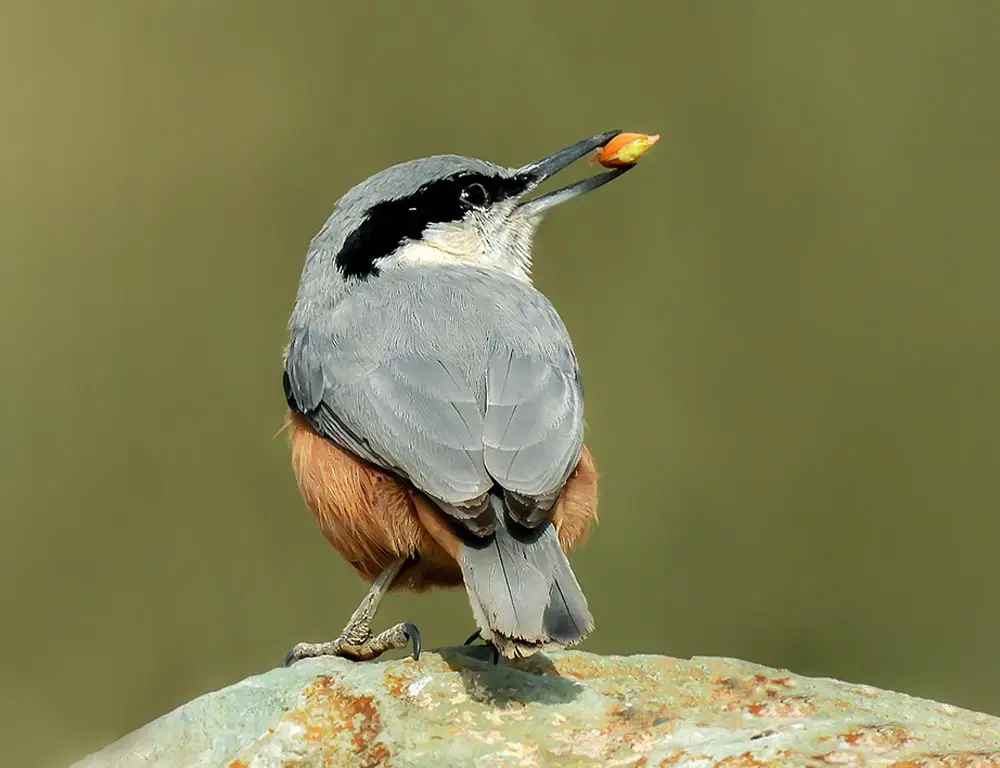
The Eastern Rock Nuthatch is a species of bird found in many countries across the Middle East and Central Asia. It has a grey body with white underparts and two prominent black stripes on its head.
This small but tough bird can be seen clinging to rocks while searching for food such as insects or seeds among crevices.
They are also known to form flocks during winter months when they feed on nuts from trees like walnuts and hazelnuts.
The Persian nuthatch population faces threats due to shrinking habitats caused by human activities such as urbanization, deforestation, and overgrazing, etc., conservation efforts must be taken if we wish this remarkable little creature will remain around us for future generations.
Scientific classification:
| Kingdom | Animalia |
| Phylum | Chordata |
| Class | Aves |
| Order | Passeriformes |
| Family | Sittidae |
| Genus | Sitta |
| Species | S. tephronota |
30. Burmese Nuthatch
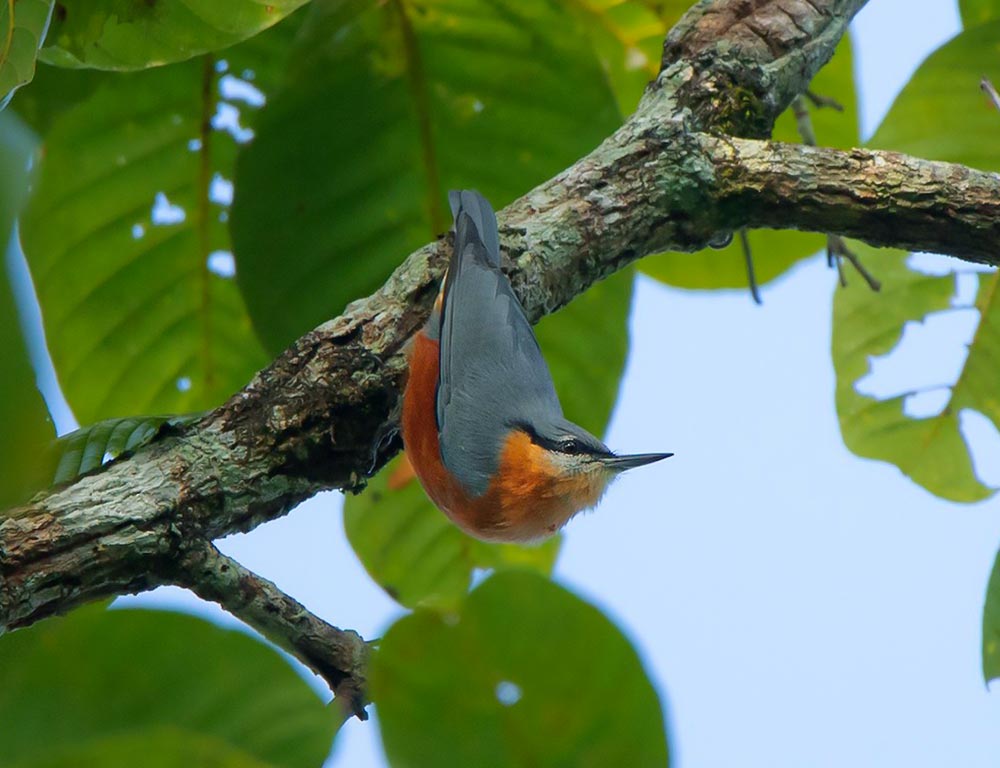
The Burmese nuthatch is a species of bird that belongs to the family Sittidae and can be found in Myanmar, Thailand, Laos, Cambodia, and Vietnam.
It inhabits subtropical or tropical dry forests, lowland moist forests as well as montane moist forests.
This species was split from its original form by Rasmussen and Anderton in 2005 due to physical differences such as it being larger than other similar birds in size.
The male has an olive-brown upper body with white underparts while females are greyish brown above with buffy underparts along with a distinct eye stripe bordered by black below the eyes on both sexes.
These birds forage mainly on tree trunks for insects but also feed on berries when available during winter months.
They make loud calls that sound like “tit” which is why they are known locally as tit-babblers.
Scientific classification:
| Kingdom | Animalia |
| Phylum | Chordata |
| Class | Aves |
| Order | Passeriformes |
| Family | Sittidae |
| Genus | Sitta |
| Species | S. neglecta |
To Recap
The existence of 30 nuthatch species worldwide underscores the remarkable diversity and adaptability of this avian family.
Through this exploration, we have uncovered their distinctive traits, behaviors, and habitats, from the North American White-breasted Nuthatch to the Eurasian Eurasian nuthatch.
These birds exemplify nature’s ability to evolve and thrive in various environments. Their charming personalities, unique calls, and acrobatic feeding habits have endeared them to bird enthusiasts worldwide.
Yet, the conservation of their habitats remains crucial to ensuring the survival of these remarkable species, underscoring the importance of continued efforts to protect and preserve the rich tapestry of nuthatch biodiversity on our planet.